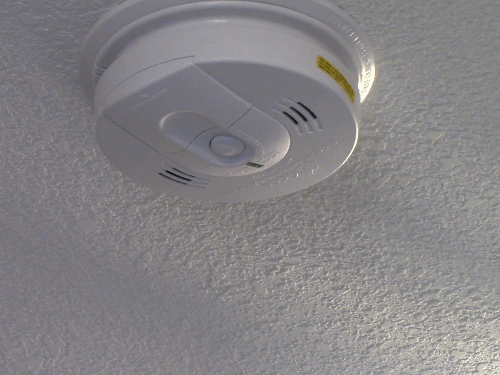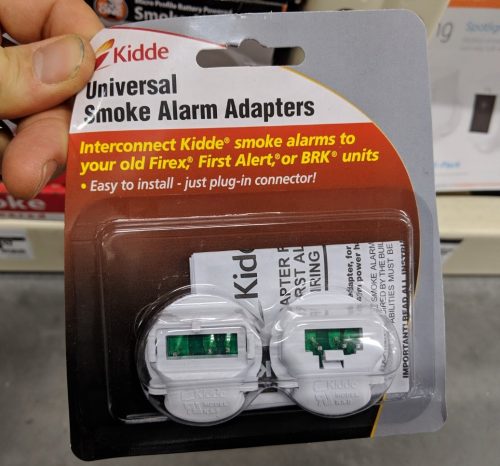Replacing a hardwired smoke alarm is a piece of cake. If you purchase a smoke alarm from the same manufacturer, you might be able to use the same wiring harness. You simply disconnect the existing smoke alarm and pop in the new one. The clip below shows me doing this. You can do this too.

To be safe, turn the power off first, of course.
If you can’t find the same unit, consider purchasing a wiring adapter, which converts the wiring harness from one manufacturer to another.

With an adapter, there’s no wiring that needs to be done. You just pop the old harness out of your smoke alarm and plug it into the adapter. From there, you plug the adapter into your new smoke alarm. It’s just like I showed in the clip above. You’ll probably need to replace the mounting ring, which consists of two simple screws. It’s about as easy as replacing a cover plate on a light switch. Anyone can do this.
Doing the actual wiring
The most difficult way to replace a hard-wired smoke alarm is to actually re-do the wiring. Even then, however, it’s not difficult. It’s a matter of simply swapping out the wiring harness. To make proper electrical connections, check out the advice given by The Family Handyman: https://www.familyhandyman.com/electrical/wiring/how-to-make-safe-wire-nut-connections/. Also, here’s a video they put together showing the steps:
If you can do this, you can replace a hardwired smoke alarm. The steps are pretty simple:
- Turn off the power.
- Give your smoke alarm a twist to loosen it.
- Disconnect your smoke alarm from the wiring harness.
- Loosen the screws that hold the mounting bracket in place.
- Remove the mounting bracket.
- Disconnect the old wiring harness from the existing wires.
- Connect the new wiring harness.
- Tuck the wires into place.
- Install the new mounting bracket.
- Connect the new smoke alarm.
- Give the new smoke alarm a twist to secure it.
- Turn the power back on.
- Test the smoke alarm.
Here’s a video with the boring parts sped up to show what these steps look like: https://youtu.be/RWIL10XXDFU
Disclaimer: as with all electrical work, don’t do anything that you’re not qualified to do. Don’t take this as a complete electrical how-to guide, either. This is just an overview. The installation instructions from the manufacturer are a heck of a lot longer than this and are packed with disclaimers. You should read and follow all of those instructions, because more steps will surely be required, depending on the specific unit.

